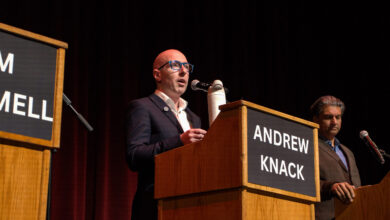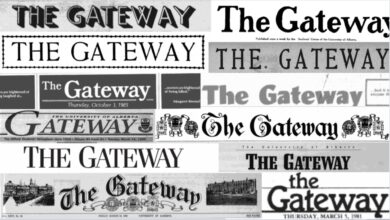Twentysomethings: Separating Fantasy and Reality
 Willow Austin
Willow AustinIn the Dec. 2, 1990 issue of the New York Times, four months before the release of his book American Psycho, Bret Easton Ellis wrote an essay called “Twentysomethings: Adrift in a Pop Landscape.” Examining popular contemporary movies, television and music, he argues that his generation of twentysomethings was “basically unshockable,” adding “culture doesn’t play the same role in our lives that it did for previous generations: to liberate, break boundaries, show the unshowable.”
25 years later, we are the inheritors of Ellis’ “twentysomething” culture. While applying Ellis’ bleak view of his own generation’s pop culture to our situation is certainly justified, our situation seems to offer more hope.
In many ways, there is little difference between his twentysomethings and us. We have been equally bombarded by images, TV shows, characters, products. Divorce rates haven’t changed while hyphenated surnames and scattered families persist. Twentysomethings today, like our progenitors, lack coherence: in many ways, we are as clueless and indecisive as Ellis claims his generation to be.
It’s not too broad a generalization to say that we harbour more economic anxiety than the previous generation. Prices have increased at a higher rate than have wages. Earning post-secondary education is hardly optional, students and parents struggle to pay tuition in the wake of its exponential rise, industries demand highly specialized skill sets and colleges sacrifice tenets of liberal arts education to adjust accordingly. The irony that university teaches ethical principles while its own business model contradicts them would be delicious if it wasn’t so bitter.
Upon graduation, jobs and pay are unfulfilling and it’s a struggle to maintain our parents’ lifestyle. Intuitively, campaigns to expose and erode the mental health stigma materialize because depression in its various forms seems so widespread — there’s little sense exerting effort to hide the ubiquitous.
The 80s ideal of financial success is satirized by movies such as Wolf of Wall Street and many twentysomethings are disillusioned and cynical toward economic aspects of the American (Canadian) dream. Distance grows between us and Wall Street, causing spontaneous, unproductive, Facebook-promoted protests. We don’t know what we want — we just know what we don’t want.
Our immediate reality alternates between the distressing and the dull and we seek distractions of fantastical proportions. The proliferation of fantasy movies and TV shows in the past twenty years has been spectacular. Game of Thrones features different characters each on their own quest for the Iron Throne within a world of unearthly creatures, awesome landscapes and, most importantly, ferocious violence. The show’s gore and mutilation are lurid and realistic. It seems that extensive research has gone into showing how blood would actually course from a slit throat and what pulling a tongue through the wound would actually look like. We seek to portray the unrealistic as realistically as possible.
Exposure to extreme violence isn’t inherently bad. Except for the most disturbed among us, twentysomethings can for the most part distinguish between fantasy and reality. Video games approach the quality of TV and movies but the former give the user control. Conjuring tanks out of the air in Grand Theft Auto and utterly disregarding a representation of humanity shows how deeply yet harmlessly we can indulge.
There are problems when we take as reality the assumptions that undergird fantastical narratives. Superhero plots in TV shows and various movies that blend hard-hitting drama with planet-smashing destruction have experienced a strong resurgence. A common feature of The Avengers movies (some of the highest grossing of all-time) is the villain’s objective: either to annihilate Earth or alter it for the worst beyond anything recognizable while killing as many people as possible. The heroes’ task, while difficult to achieve, is straightforward: to keep such change from happening. The unequivocally, self-evidently evil villain is a shadowy Other that hardly needs to be understood.
This superhero narrative applies very easily to military contexts. After 9/11, the Bush administration and the media cast roles latent in the American consciousness although the Iraqi situation had been previously ignored: the villain, Saddam Hussein, threatened innocent Iraqi citizens who needed to be saved by a hero, the U.S. Army. Chris Kyle became Captain America. Our perpetual exposure to this superhero narrative allows military roles to be cast with hardly a second thought, and the villain becomes whichever purported barbarians are in vogue.
The major difference between now and the 80s is the internet and our news consumption, or in other words, our access to social reality. Jean Baudrillard emphatically declared in the early 90s and Jon Stewart has showed throughout the past decade that fantasies, fabrications, conjecture and heavy bias often constitute the evening news. But as far as our generation is concerned, the evening news, like print media, is becoming an obsolete format. Twentysomethings now obtain information from endless social media feeds in multiple formats ranging from traditional evening news snippets to op-eds and essays. We can readily view multiple perspectives on a single topic from the most informed experts in the world.
In spite of the constant banal distractions of BuzzFeed, YouTube, Facebook, Twitter and Vines, the internet does what the pop culture of Ellis’ generation failed to do: it liberates and breaks boundaries. We can see unedited videos of Walter Scott being shot in the back by police; we can witness ISIS beheadings. We can experience reality without the intervention of network television. Unlike Ellis’ unshockable twentysomethings, reality can shock us.
With the multiplicity of available perspectives and a heightened media awareness, the current generation of twentysomethings has the potential to be better informed of and engaged with the realities of the world than had the previous generation, while allowing our fantasies to split off and develop as they will.
This is assuming that we don’t confuse fantasy with reality. ISIS’s strength is its ability to cast themselves as the shadowy, barbaric, self-evidently evil in order to attract Western attention. Military historian and journalist Gwynne Dyer explains that terrorism is “the weapon of the weak,” a quick, effective means of attracting followers. ISIS makes its videos and promotes them heavily while American citizens interpret ISIS as a self-evident evil that needs to be eradicated. Manifestations of the superhero movie narrative contribute significantly to justifications for invasion. In truth, military intervention from the hated American army intensifies pre-existing animosity between them and citizens of countries affected by war. Civilian casualties are numerous, causing people disaffected by the excesses of a military superpower to join small, fervent fundamentalist groups.
ISIS’s rhetorical techniques, while horribly violent, must be understood. Twentysomethings are affected by decapitation videos, but we have the means to consider complexities and assess the situation rather than instantly flash the Bat-Signal. We can keep our fantasies and realities separate. The internet has made the world such an interesting place that indulgent pop fantasies, while amusing, are hardly needed anymore.




